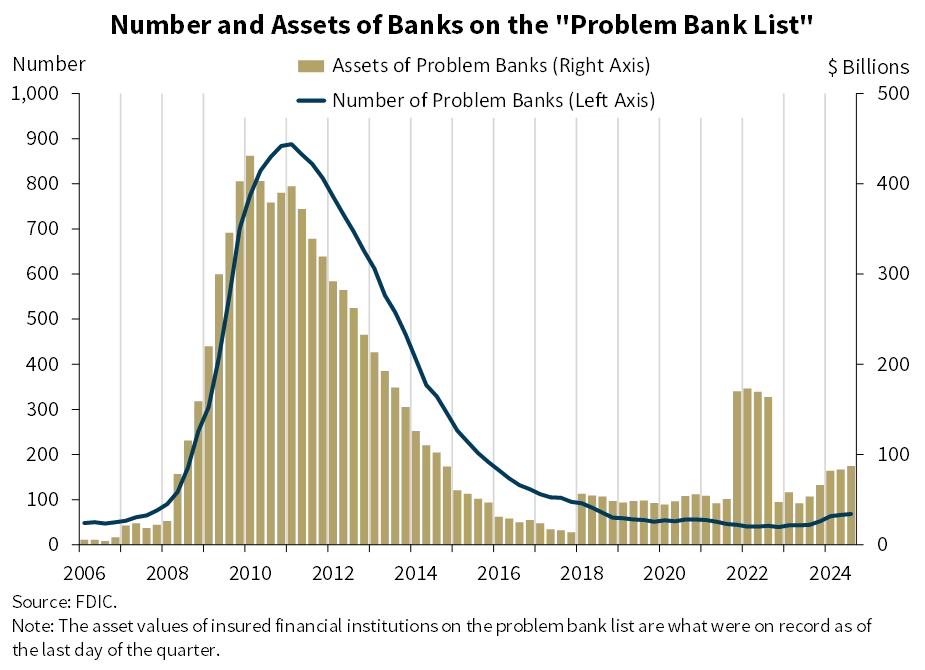The number of US banks saddled with major issues continues to climb, according to new numbers from the Federal Deposit Insurance Corporation (FDIC).
In its Quarterly Banking Profile report, the FDIC says the number of US lenders on its “Problem Bank List” rose to 68 in Q3.
The figure represents the fifth quarterly increase in the number of banks receiving a rating of 4 or 5 on the CAMELS rating system since Q2 of 2023.
A lender with a CAMELS rating of 4 indicates that the firm is experiencing financial, operational or managerial weaknesses – or a combination of such issues – that could reasonably threaten its soundness if unresolved. Meanwhile, a bank with a 5 score on the CAMELS system suggests it is critically falling short in one or more areas and requires abrupt remedial attention.
“Total assets held by problem banks rose $3.9 billion to $87.3 billion. Problem banks represent 1.5 percent of total banks, which is within the normal range of 1 to 2 percent of all banks during non-crisis periods”
Meanwhile, the amount of unrealized losses on banks’ balance sheets has dropped.
The FDIC says banks are burdened with $364 billion in paper losses as of the third quarter of this year, largely due to exposure to the residential real estate and Treasury markets.
Unrealized losses represent the difference between the price banks paid for securities and the current market value of those assets.
The banks’ paper losses declined in the third quarter by $148.9 billion from $512.9 billion reported in Q2.
However, FDIC Chair Martin J. Gruenberg says the decrease in banks’ paper losses last quarter is only temporary.
According to Gruenberg, changes in longer-term interest rates since the end of Q3 indicate that US banks are likely now holding unrealized losses at closer to half a trillion dollars.
“Increases in longer-term interest rates since the end of the third quarter would likely reverse most of these improvements in unrealized losses if measured today.”
While Gruenberg reiterates the resilience of the banking industry, the FDIC chair notes that a handful of headwinds continue to threaten US lenders.
“The industry still faces significant downside risks from the continued effects of inflation, volatility in market interest rates, and geopolitical uncertainty. These issues could cause credit quality, earnings and liquidity challenges for the industry.
In addition, weakness in certain loan portfolios, particularly…
Click Here to Read the Full Original Article at The Daily Hodl…
























